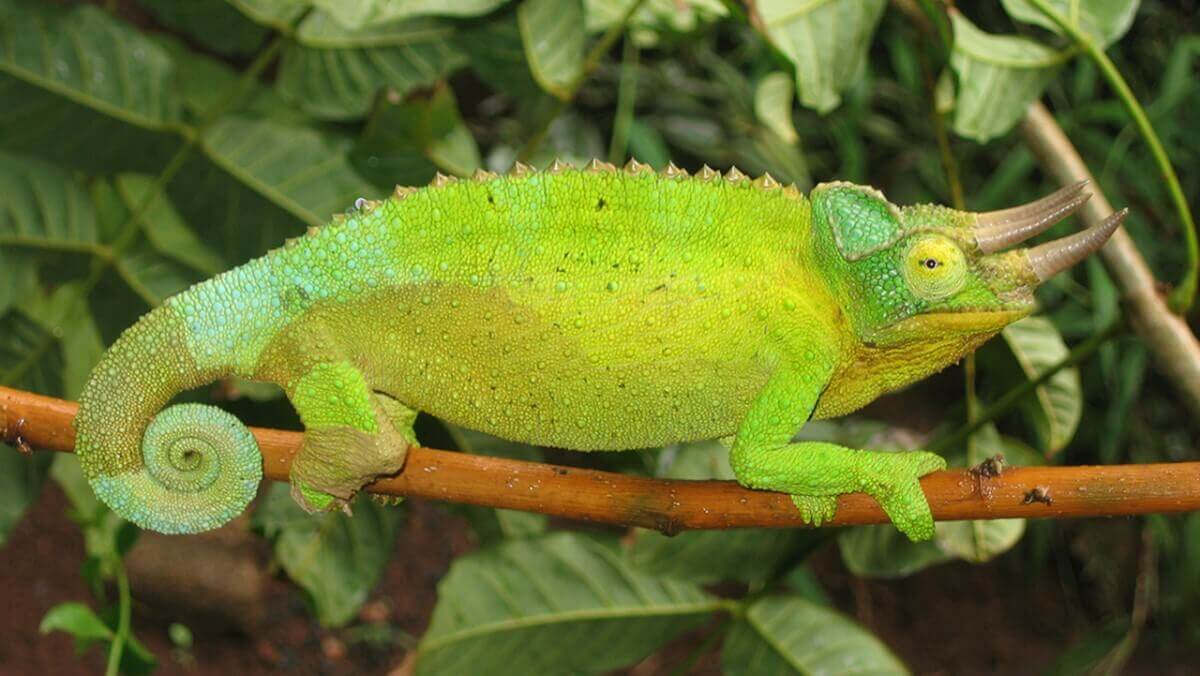Chameleons get brighter when they don't have to deal with predators
12 May 2022
/Ellen Phiddian

A male Jackson’s chameleon from Kenya. This male is using its display color, signalling its dominance to rival males or quality to a female. Credit: Photo by Martin J. Whiting.
In 1972, a pet shop owner on the island of Oahu, in Hawaii, ordered a few dozen Jackson’s chameleons from Kenya to sell. When the lizards arrived, rattled by their long journey, the shop owner left them in his backyard to recover – allowing them to escape, and thus inadvertently causing the colonisation of Oahu by invasive chameleons.
Jackson’s chameleons (Trioceros jacksonii xantholophus) have flourished in Hawaii, where there are many fewer predators for them to worry about. And this singular point of introduction – while bad for the island’s ecology – has allowed researchers to watch natural selection occurring with a level of detail they don’t normally get.
One unusual feature they’ve noticed is the chameleons’ colours changing. Male Jackson’s chameleons are normally a bright green, but they change colour to become lemon yellow when trying to attract females, or ward off other male rivals.
According to a paper in Science Advances, this shade of yellow has become brighter in Hawaii.
“Jackson’s chameleons are native to East Africa, where they are preyed upon by a wide range of mostly bird and snake predators,” says lead author Professor Martin Whiting, a researcher at Macquarie University’s School of Natural Sciences. “In Hawaii, however, there are virtually no bird or snake predators to worry about.”
More:
https://cosmosmagazine.com/nature/jacksons-chameleons-natural-sexual-selection/
